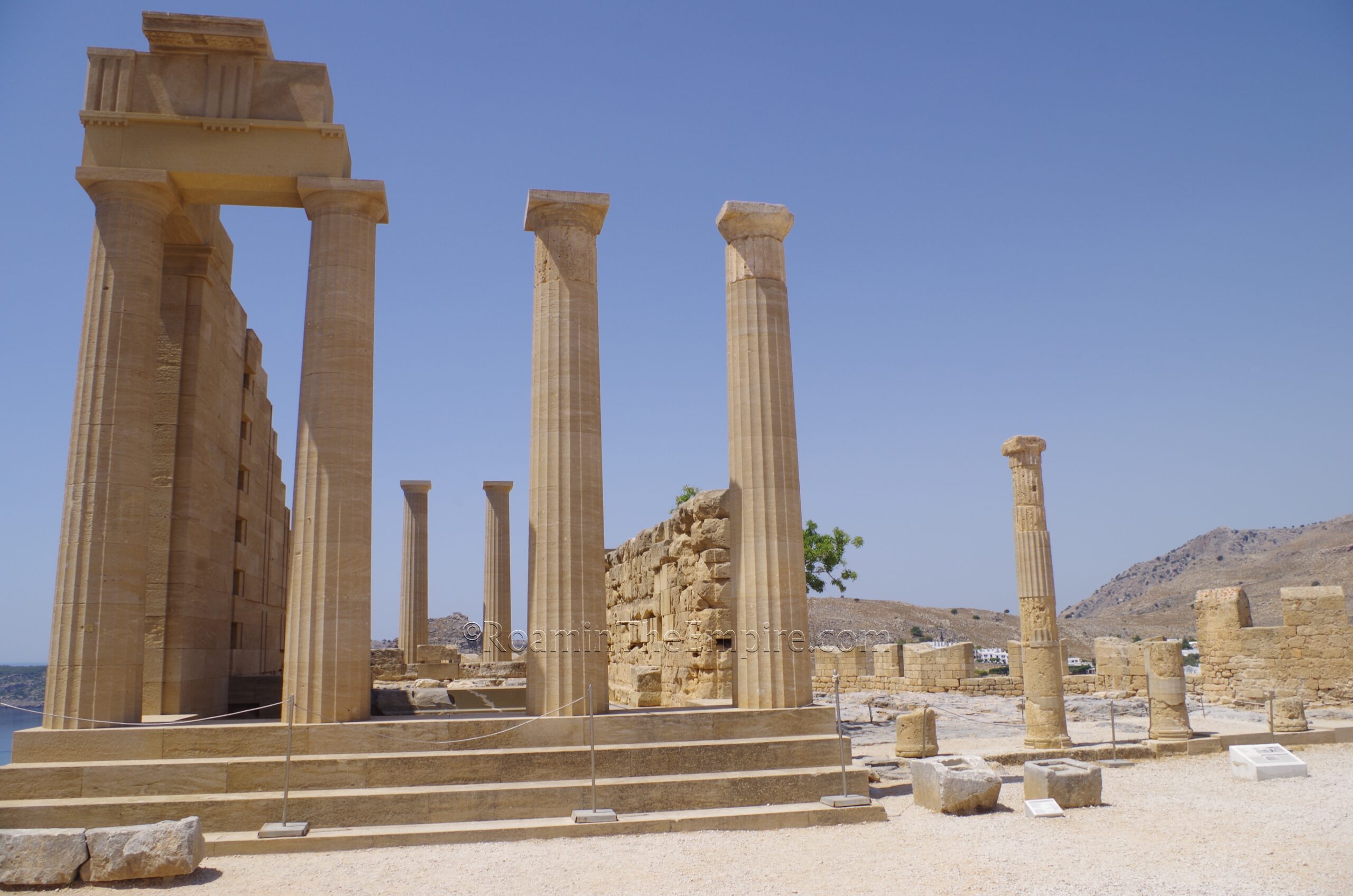
Continued From Lindus, Asiana – Part I
The final, monumental staircase, originally constructed in the first half of the 3rd century BCE, led up through a monumental propylaia. Unfortunately, not much of the propylaia survives, really just markings on the pavement that show the original foundations of it. The staircase too is mostly reconstructed. The only significant original remains of the propylaia/terrace walls are a small section on the north/northwest side of the terrace, where the wall would have supported the western side of the propylaia.
Set back from where the propylaia would have been is the focal point of the acropolis, the Temple of Athena Lindia. Legendarily, the temple was founded by Danaus as an offering to Athena Lindia for her help in allowing him to construct a boat for himself and his daughters to escape his brother Aegyptus and his sons. The remains of the temple standing today are from a building dating to the late 4th century BCE, which had replaced an earlier temple that was probably built in the 6th century BCE under Cleoboulos, but was destroyed fire in 392 BCE. Religious veneration had likely been going on at the site well before then, though, possibly dating back to Mycenaean times and to a different deity. The rebuilding of the temple also saw the inclusion of Zeus Polieus in veneration at the location. Flanking the doors of the temple were inscribed blocks listing the priests of Athena Lindia between 375 BCE and 27 CE, which later ended up as spolia at the church of Aghios Stephanos, which was built on the site of the Tetrastoön (and is now displayed in the Nationalmuseet in Copenhagen). Displayed next to the north face of the temple are a couple of thesauroi, presumably from the temple.
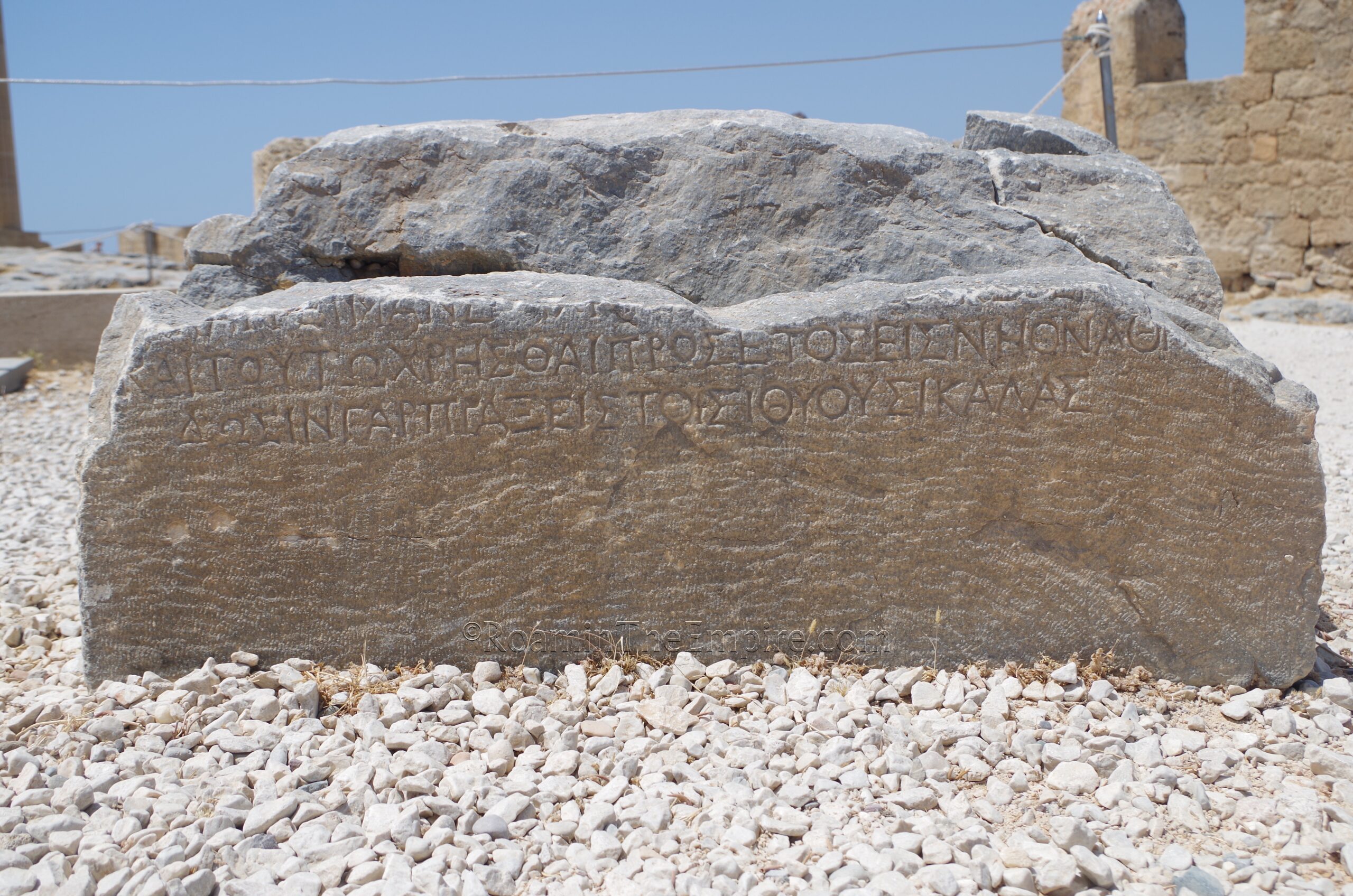
Connected to the temple on the northwest side, now marked by the presence of a few fragmentary columns, is the portico of Psithyros. An inscription, which presently stands in front of the remains of the portico, indicates that a temple was built here, in association with the portico, in honor of the oracular demon Psithyros by a certain Seleukos around 200 CE. Along the northwestern extent of the terrace, a number of inscriptions are lined up on display. A few signs indicate these as being bases dedicated to Athena Lindia, though it is unclear if that attribution is to the few bases they are near or the corpus as a whole.
At the southwestern part of the terrace, a path leads down through a rocky area back to the entrance area. Scattered around this area are a number of inscriptions (without any identifying information) and some obvious cutting done in the rocks. Among the scattered inscriptions is part of a votive exedra dedicated to Tiberius, which supported statues of him, Augustus, and his sons Drusus and Germanicus. Tiberius had spent time studying rhetoric on Rhodes around 20 BCE as well as spent the period between 6 BCE and 2 CE on Rhodes in a sort of retirement/exile.
Overall, I spent roughly 3 hours at the acropolis. It was quite crowded, even during the subdued tourist season of 2021, so there was a lot of waiting for clear shots. There were also a lot of inscriptions scattered around the site to inspect. Most points of interest had signs in both English and Greek. While I understand a sign for every inscription might have been a lot to ask for, some of the more important or interesting ones were singled out.
There are a few ancient sites around and in the immediate vicinity of the modern town of Lindos that are not on the acropolis, which would have, in some cases, made up the settlement of Lindus. At the base of the southwestern slope of the hill on which the acropolis is located, carved into the actual hill of the acropolis is the theater of Lindus. Constructed in the 4th century BCE, the theater sports 26 rows of seating and is estimated to have had a capacity of about 2,000 spectators. The theater is not directly accessible and has a fence around it. There does not seem to be any schedule for actually getting access to the monument.
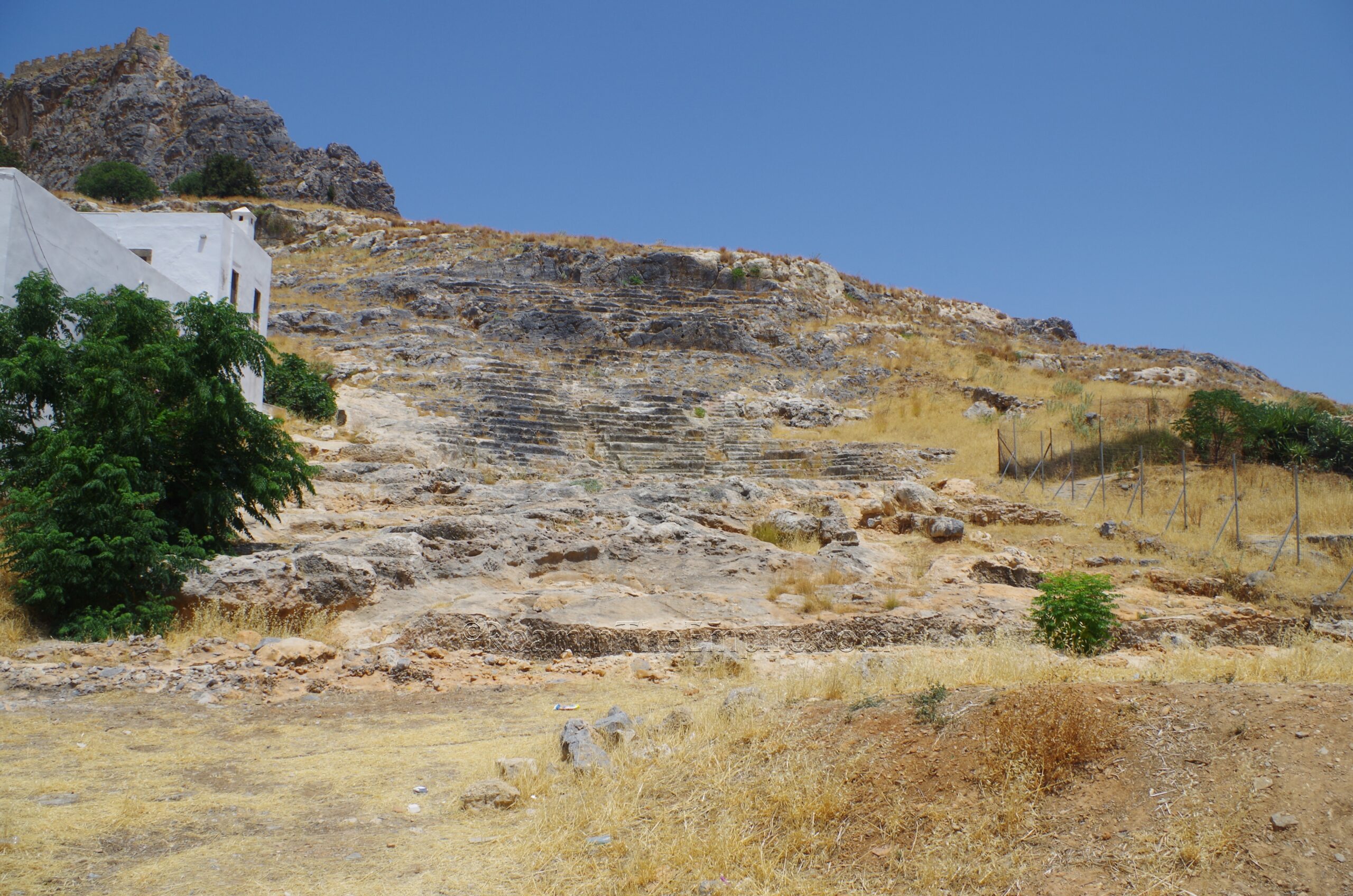
Adjacent to the theater is the so called Tetrastoön, a rectangular building with an internal colonnade. This was the site of the later church in which the Athena Lindia priest list was found, as well as the location where the Chronicle of Lindos was found (a list of offerings and donors to the Temple of Athena Lindia, and like the priest list, displayed in the Nationalmuseet in Copenhagen). It is dated, vaguely, to the Hellenistic period. Though the exact nature of the building is not clear, it is believed to have possibly been a sanctuary of Dionysus or Apollo Smintheus. The building is estimated to have held about 1,500 people. Like the theater, it is fenced and there is no direct access. A small informational sign in Greek and English is present on-site describing the two monuments.
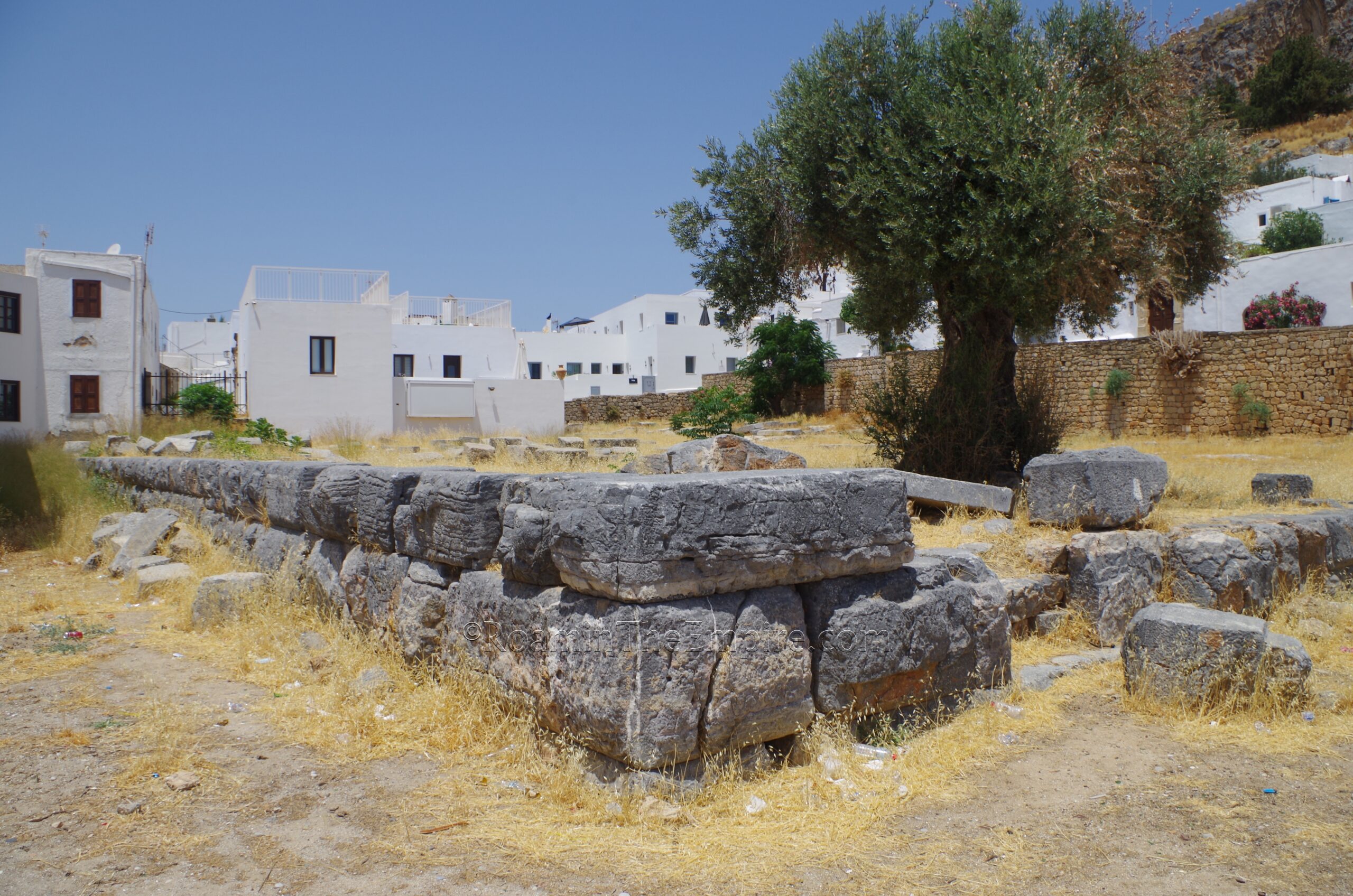
On the opposite side of the hill, some paths lead up to the large cave beneath the acropolis of Lindus, the Panaghia Spiliotissa. This cave is believed to be the original location of ritual activity at the site, which eventually transferred to the area above, where the Temple of Athena Lindia is now located, though some activity continued in the cave. Nothing really remains of any ancient structures here. Apparently an inscription naming a priest of Athena Lindia dating to the 3rd century CE was cut into the rock of the cave, but I couldn’t find it. There are some remains of worked stone lying about. Some later constructions, probably associated with the post-antique Christian occupation here are visible around and outside the mouth of the cave. The cave also offers views over the inlet that would have served as the harbor of Lindus, though again there doesn’t seem to be any discernible remains. Getting up to the cave is a little challenging; the trail is rough and requires a bit of scrambling in places. Toward the top it isn’t very easy to follow. Given that there’s actually not much to see there (aside from goats), it might not be something most would want to pursue. The hike up itself was around half an hour or so.
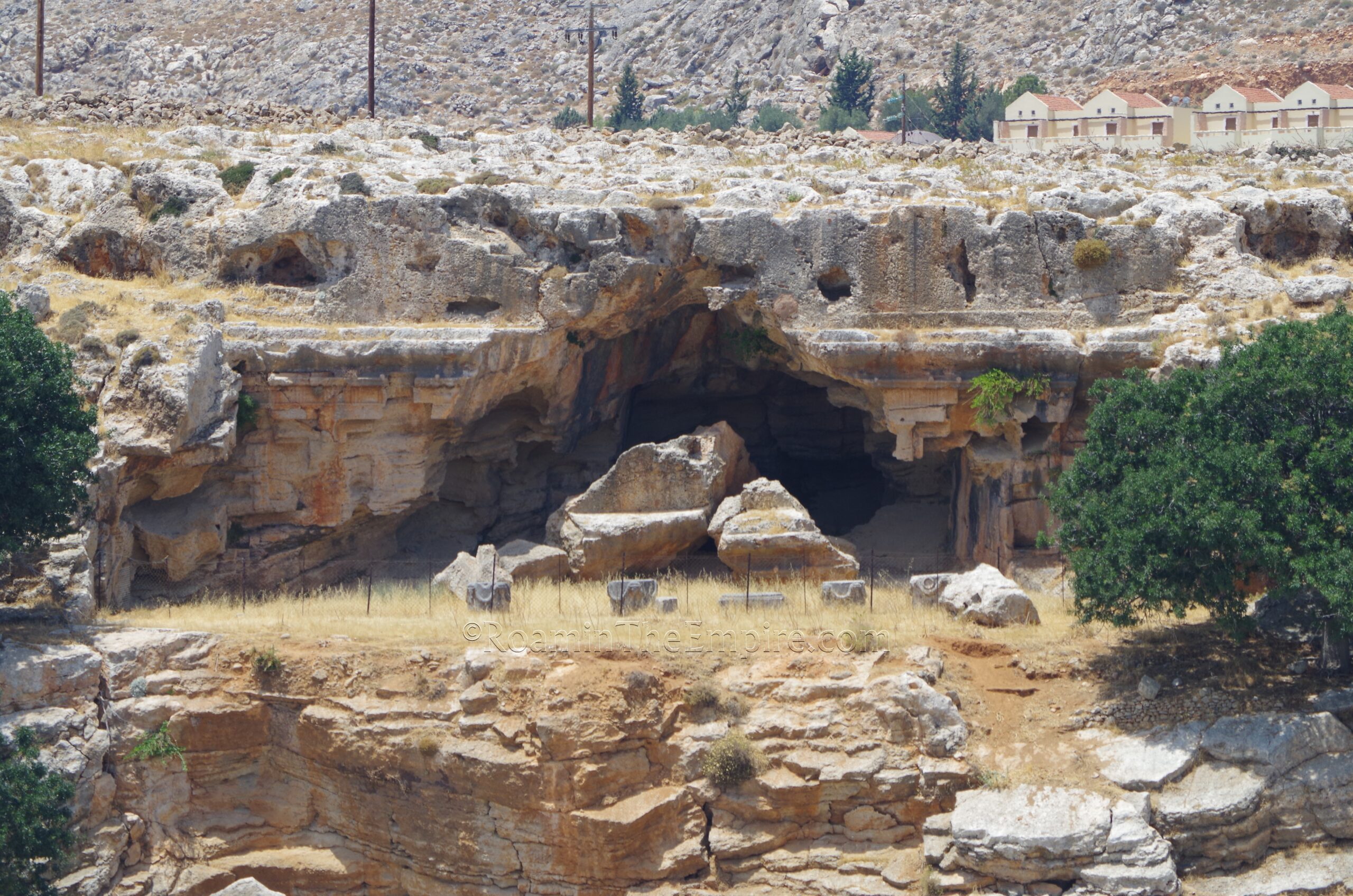
On the spur of the hill to the north of the acropolis is apparently a site called the Boukópion, a place of bull sacrifice. There are supposed to be a number of inscriptions cut into the rock of the area that attest to the activities as well as some remains of an 8th-10th century BCE temple. Unfortunately, the site isn’t really on the tourist route, so there is not much indication as to the exact location, and I was unsuccessful in finding it; I wasn’t even able to find any pictures to help identify the location.
On the hill opposite the acropolis to the west, and visible from the acropolis and other spots in town, are the remains of the so-called Archokrateion. This was a Hellenistic rock-cut tomb in the side of the hill that housed burials associated with the Archokratides family (according to inscriptions in the rock of the tombs). There were a total of 19 burial chambers. There is no direct access to the tomb, as there is a fence around the opening, but I couldn’t even find any real access to get up onto that area of the hill either, just to get a closer look from outside the fence. It is pretty visible from higher points around the town to the east, though, including, again, the acropolis.
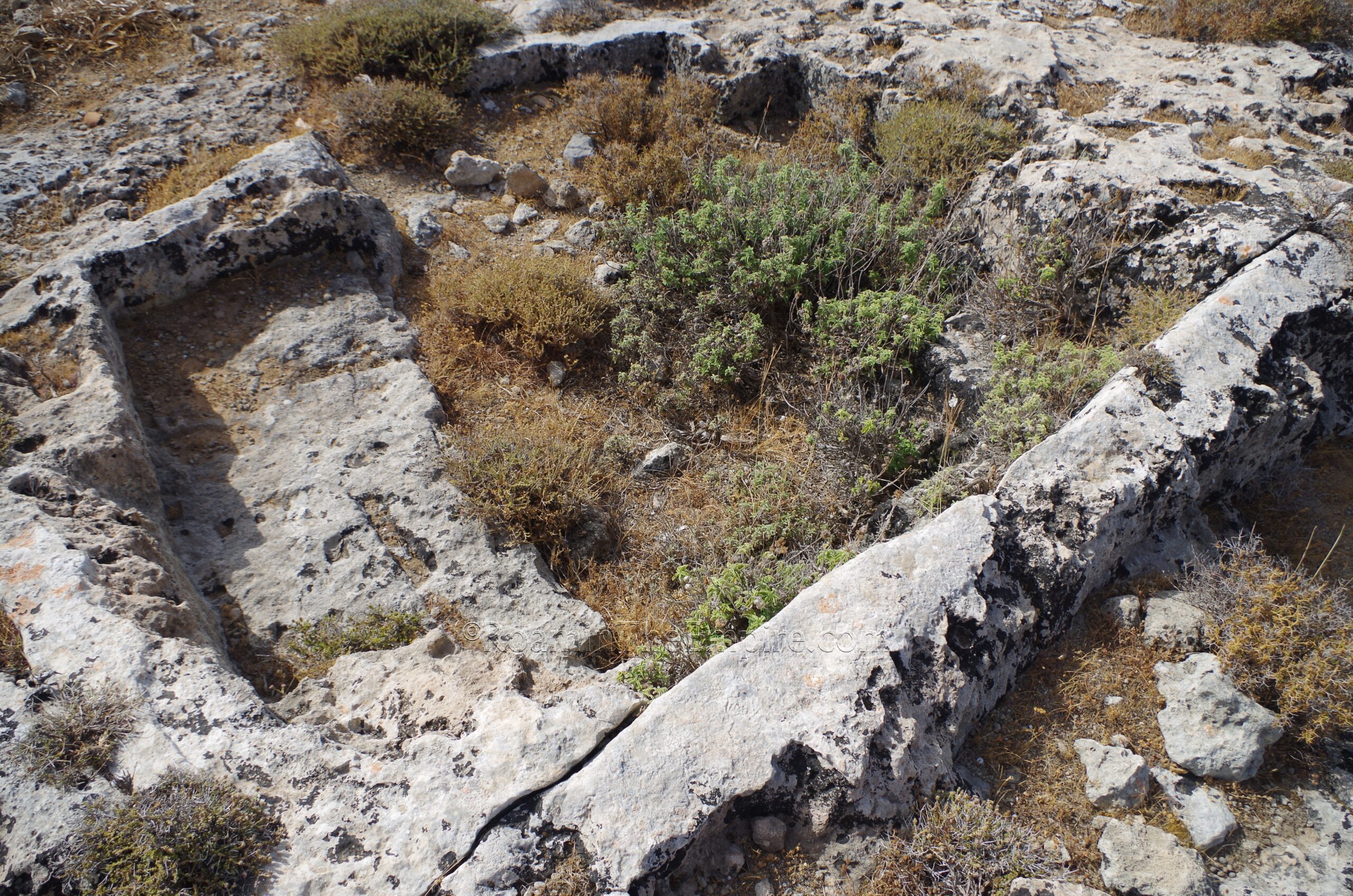
The last two sites are a bit outside of town. There’s a trail that leads around the bay to the north of Lindus, a good place to catch it is the parking area to the northwest of the modern town, adjacent to the beaches. There’s evidence all along the north side of this bay, adjacent to the main trail that heads out toward the tip of the peninsula. This culminates in a very large quarrying area located on the outcropping that juts southward toward Lindus. What was quarried here was panchina limestone, which is soft and easy to work and was a frequent building material used in construction at Lindus and for the monuments of the acropolis. There are no signs or any kind of indication of the quarry and I actually had no idea they were there. I just noticed that there were distinct signs of quarrying here as I was passing through, and after a bit of research found that some ancient quarries had indeed been identified here.
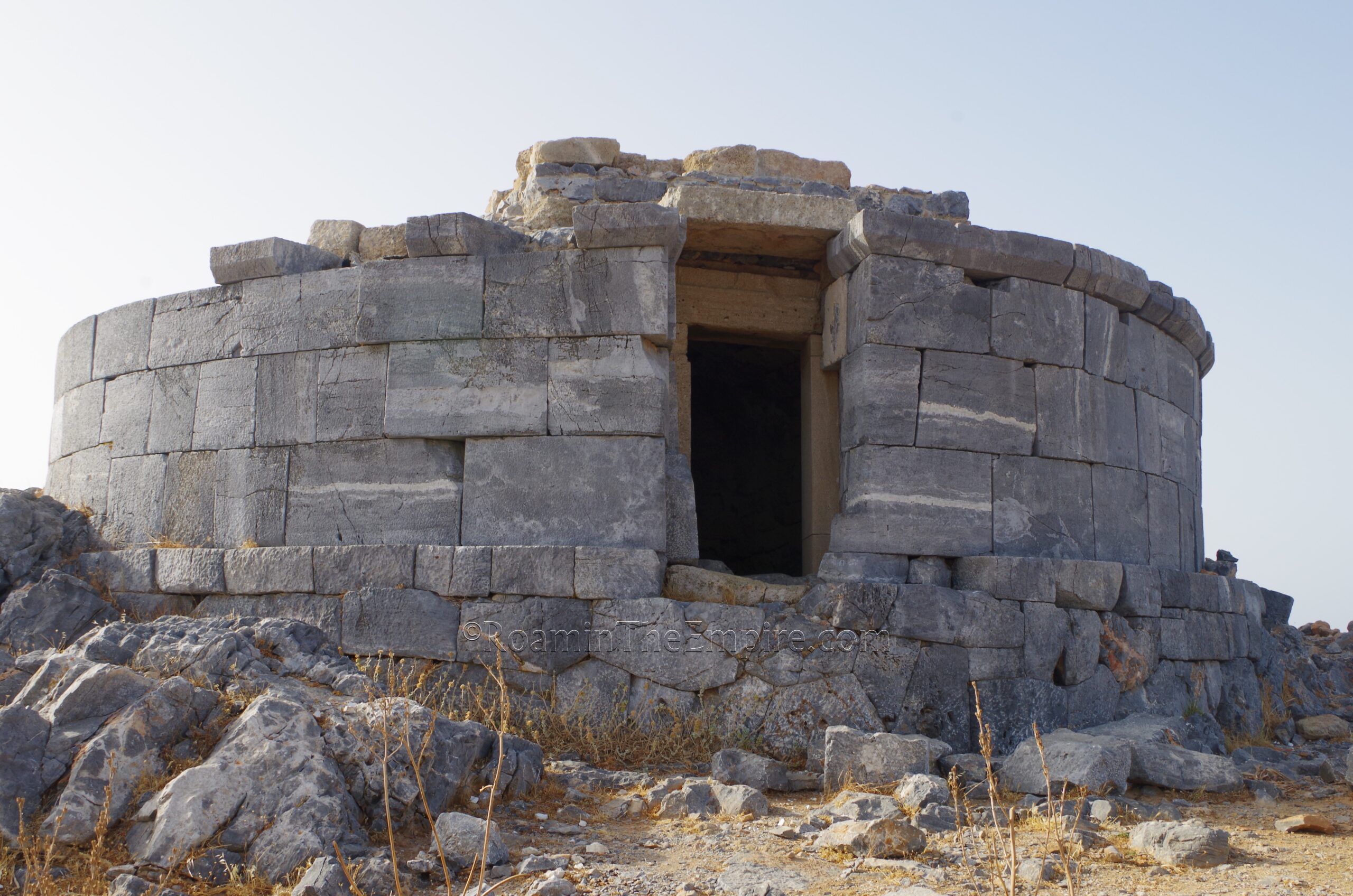
Following the trail farther out onto the peninsula leads to the so-called Tomb of Cleoboulos, which is what I was planning on seeing when I stumbled upon the quarries. It’s not the actual tomb of the 6th century BCE philosopher Cleoboulos, but rather seems to be a Hellenistic tomb dating to the 2nd or 1st century BCE. It was later converted into a church, which is probably why it survives in such good condition, but most of the vestiges of the church have since been removed. There’s actually bits of stucco and wall painting preserved in the tomb, as well as some architectural relief around the doorway. The tomb is about 3 kilometers from the parking lot, so expect about an hour or so each way. With stops, it was a total of about 2.5 hours. It’s not a difficult hike, most of it is on flat ground aside from the last ascent to the tomb, but there isn’t really any shade, so it might not be something you would want to do during the heat of the day in the summer; I went in July, so I started out by 7:00 in the morning. There are no signs or trail markers, but the main trail is pretty easy to follow.
Lindus is pretty easily a full day to see everything, particularly with a hike out to see the Tomb of Cleoboulos and a hike up to the Panaghia Spiliotissa.
Sources:
Diogenes Laertius. Vitae Philosophorum, 1.6.
Finley, Moses Israel. Atlas of Classical Archaeology. New York: McGraw-Hill Book Company, 1977.
Grant, Michael. A Guide to the Ancient World: A Dictionary of Classical Place Names. New York: Barnes & Noble Books, 1997.
Higgins, Michael Dennis and Reynold Higgins. A Geological Companion to Greece and the Aegean. Ithica: Cornell University Press, 1996.
Herodotus. Historia, 1.144.
Homer. Illiad, 2.653-670, 5.627-668.
Pindar. Olympian 7, 65-75.
Pliny the Elder. Historiae Naturalis, 19.2.
Russell, Ben. Gazetteer of Stone Quarries in the Roman World. 2013.
Smith, William. Dictionary of Greek and Roman Geography. Walton & Murray, 1870.
Stillwell, Richard, William L. MacDonald, and Marian Holland. McAllister. The Princeton Encyclopedia of Classical Sites. Princeton, NJ: Princeton U Press, 1976.
Söğüt, İpek Sevda. A Synoptic Overview of the Lex Rhodia De Iactu. Presented at the 70th session of the Société Internationale Fernand de Visscher pour l’Histoire des Droits de l’Antiquité (SIHDA), September 2016, Paris, France.
Thucydides. Historia, 8.44.


